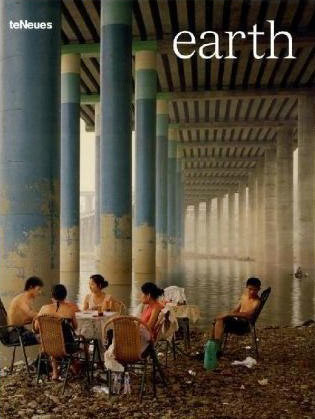Review: Earth (Prix Pictet 2009)

After a few thousand years of human (ab)use, our planet isn’t in such a great shape any longer. Granted, over the course of its history it has seen worse, but in pretty much all of those abysmal phases there weren’t any humans around whose very survival depended on temperate living conditions. If scientific data are correct our home planet’s atmosphere is heating at a rate that will make large-scale climate change inevitable - unless we do something about it. Oh, and we better do it yesterday. Of course, there are those experts who disagree, but you only have to have a brief look at their scientific record and at who funds their research to get an idea how credible they really are: Not very much.
The number of photographers addressing climate change or environmental issues has been steadily growing over the past years. The Prix Pictet, awarded in 2009 for the second time, is dedicated to honouring such photography (full disclosure: In 2009, I was one of the Nominators). Its mission statement explains that it “has a unique mandate - to use the power of photography to communicate crucial messages to a global audience; and it has a unique goal - art of the highest order, applied to the immense social and environmental threats of the new millennium.”
Earth presents the work of the shortlisted photographers (and a few other photographers who did not make it into the shortlist). Even though Earth
obviously deals with the Prize, it is best seen as a collection of photography about environmental issues, about the impact of our own presence on this planet. The range of work is impressive, and with few exceptions, the implications of the photographs are depressing.
The book makes it very clear how many photographers are concerned about our world and are producing work that, while often beautiful, still has a very powerful message for us: This is not art for art’s sake, it is art for our own sake.
Earth is a pretty lavish production, and by its own nature, it bring together names that usually are not seen in the same book. While it obviously cannot serve as a complete survey of contemporary photography, it does provide a very interesting overview of what some of its leading practitioners are doing. As such it might be of interest for anyone interested not only in contemporary photography, but also in the intersection of the art form with those larger issues that affect all of us.
Earth (Prix Pictet Volume 2), various photographers, with contributions by Kofi Annan, Peter Aspden, Francis Hodgson, Leo Johnson, 128 pages, teNeues, 2009